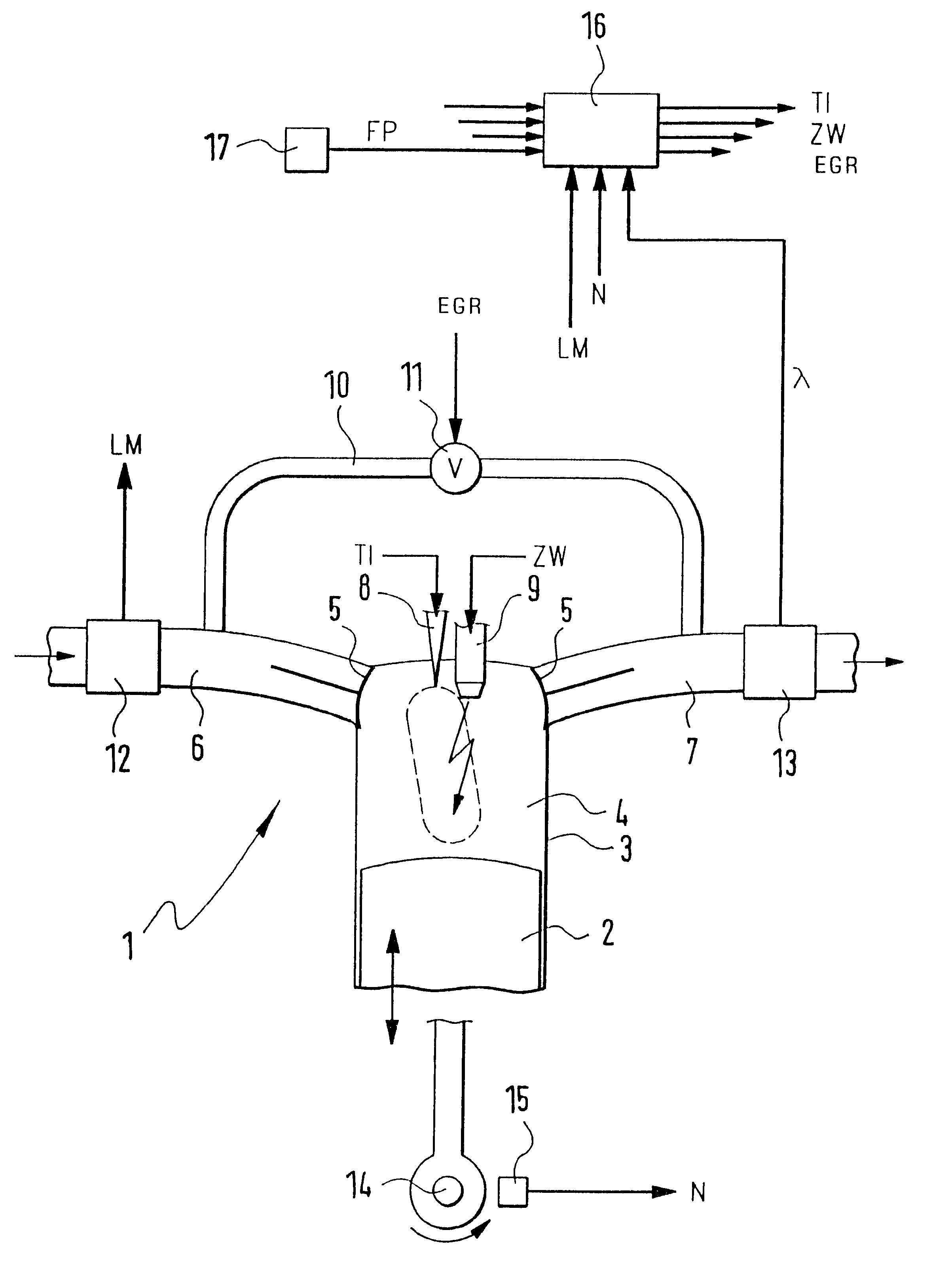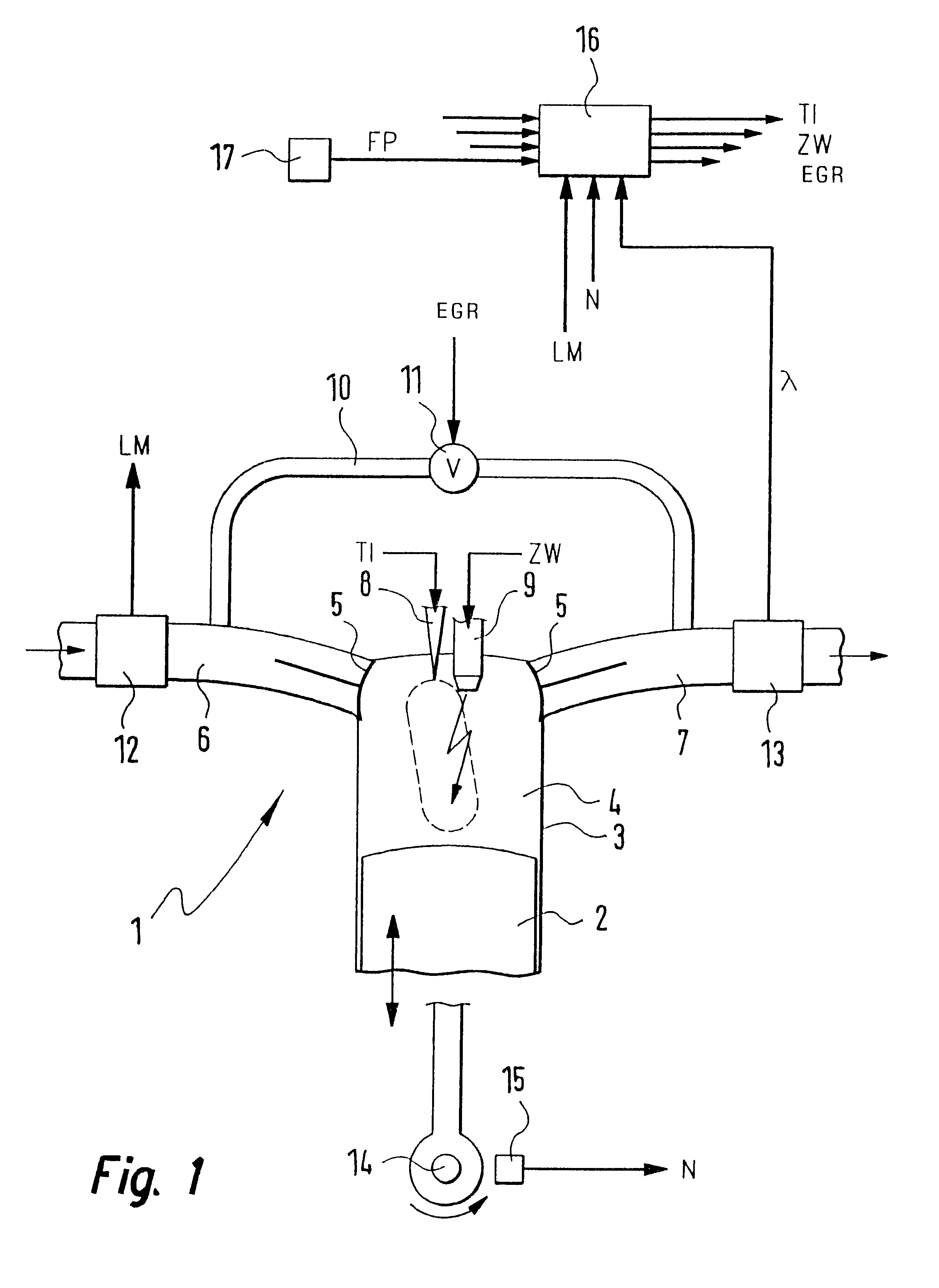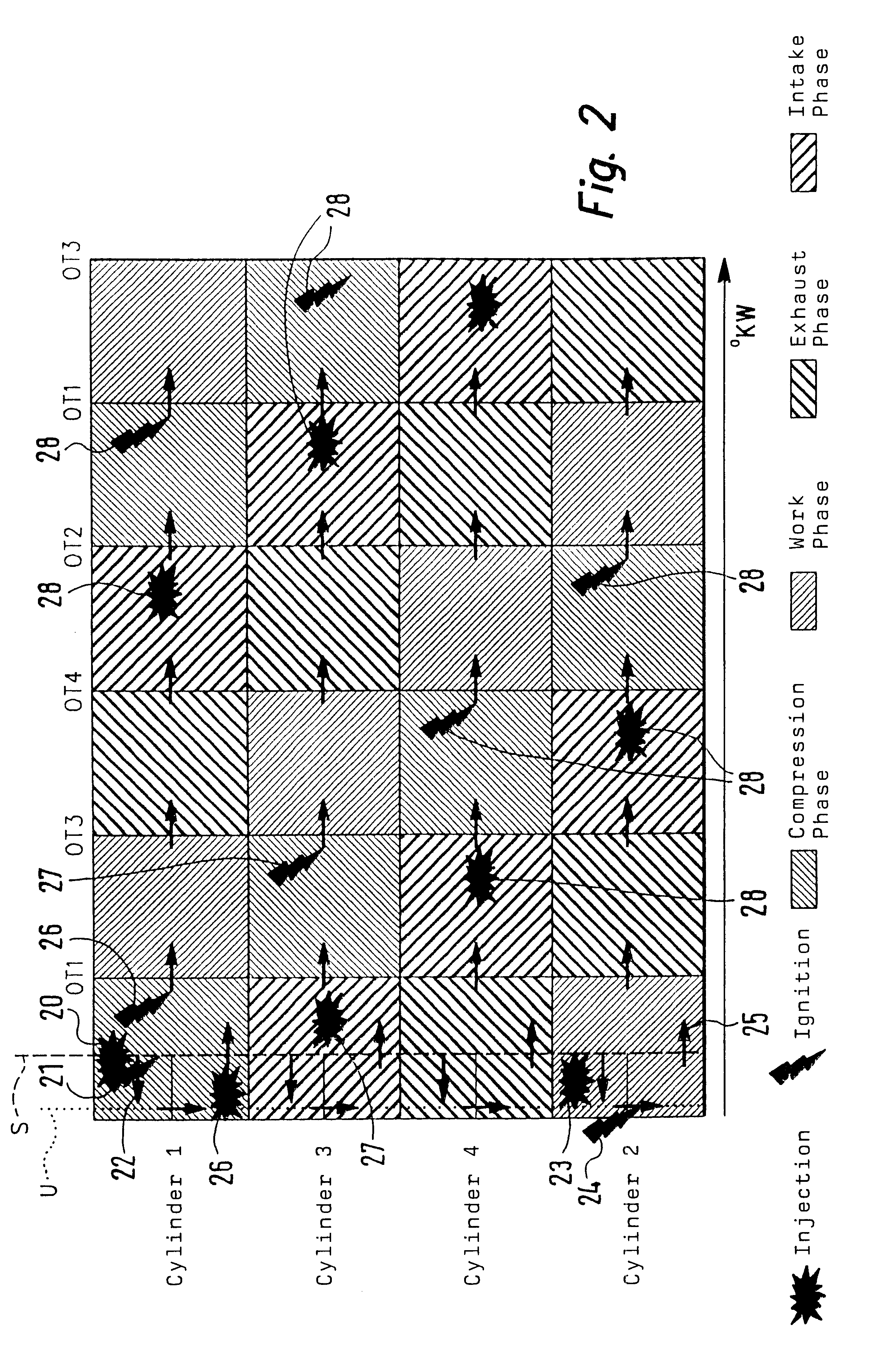Method for starting an internal combustion engine, in particular on a motor vehicle
a technology for internal combustion engines and motor vehicles, which is applied in the direction of engine starters, electric control, ignition automatic control, etc., can solve the problems of failure of the first start attempt of the engine, the failure of the first start attempt, etc., and achieve the effect of increasing the acceleration capacity
- Summary
- Abstract
- Description
- Claims
- Application Information
AI Technical Summary
Benefits of technology
Problems solved by technology
Method used
Image
Examples
Embodiment Construction
In FIG. 1, an internal combustion engine 1 is shown wherein a piston 2 is movable back and forth in a cylinder 3. The cylinder 3 is provided with a combustion chamber 4 to which an intake manifold 6 and an exhaust-gas pipe 7 are connected via valves 5. Furthermore, an injection valve 8, which can be driven by a signal TI, and a spark plug 9, which can be driven by a signal ZW, are assigned to the combustion chamber 4. The exhaust-gas pipe 7 is connected via an exhaust-gas recirculation line 10 and an exhaust-gas recirculation valve 11 to the intake manifold 6. The exhaust-gas recirculation valve 11 can be controlled by a signal EGR.
The intake manifold 6 is provided with an air mass sensor 12 and the exhaust-gas pipe 7 is provided with a lambda sensor 13. The air mass sensor 12 measures the oxygen mass of the fresh air, which is supplied to the intake manifold 6 and generates a signal LM in dependence thereon. The lambda sensor 13 measures the oxygen content of the exhaust gas in the...
PUM
 Login to View More
Login to View More Abstract
Description
Claims
Application Information
 Login to View More
Login to View More - R&D
- Intellectual Property
- Life Sciences
- Materials
- Tech Scout
- Unparalleled Data Quality
- Higher Quality Content
- 60% Fewer Hallucinations
Browse by: Latest US Patents, China's latest patents, Technical Efficacy Thesaurus, Application Domain, Technology Topic, Popular Technical Reports.
© 2025 PatSnap. All rights reserved.Legal|Privacy policy|Modern Slavery Act Transparency Statement|Sitemap|About US| Contact US: help@patsnap.com



